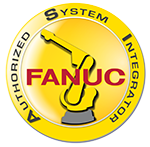Five Steps to a Successful Automation Project
Although many factors can have an impact on a custom automation system project, a few key areas can't be ignored. The success of the project will ultimately be measured by the delivered system and the realization of the planned ROI. Problems that arise at delivery almost always derive from actions that were taken, or not taken, much earlier in the project development process. A good understanding of the expectations, objectives, limitations and communication paths will launch and guide the program to a successful conclusion.
1. Truly understand your product, process and internal team before you begin.
Many times this crucial initial step is missed resulting in a Pandora's Box of problems as the production roll out nears. Typically, many projects exit the starting gate in a rush to begin and foundational steps are missed. This can result in automation projects that falter in the final phases when additional team members are introduced or it becomes apparent that changes to the product or processes are required. It is critical to include representatives from your Production, Quality, Safety and system Maintenance departments early on in the process.
2. Align yourself with an experienced supplier.
Select automation design firms that have the level of process expertise that match your needs and can demonstrate it with past, proven experience. Ask your supplier to see similar process systems. When possible, visit their facility and get references, or visit their customer locations to view their end product in action. More importantly, meet the actual team that will complete your project, not just the sales or project manager.
3. Agree on the project management expectations.
Ask your supplier to detail the process they use to manage and document the project start to finish. This should include incremental reviews, timing schedules, change order processes and methods of communication, to name just a few. Most projects can take a very bad turn in the middle if the buyer and supplier's expectations are not in alignment.
4. Understand your total time constraints.
Some buyers, and even some suppliers, may focus strictly on the design and build schedules, neglecting to have an in-depth discussion up front, regarding the testing and qualification timing absolutely required at the end. In some projects, high volume testing to determine if the system meets specifications, alone can be a significant time constraint.
5. Production Floor Integration.
Understand all the sequences of events required to integrate the system with minimal disruption to your daily production. An understanding upfront should be in place regarding the support you will receive from the automation supplier's team during the commissioning phase and final, on-site sign off. The following are examples of just a few of the questions to ask.
- Who on your team will be involved in maintaining the system and are they part of the sign off team?
- Which staff members should attend training at the supplier's site and do they know key responsibility decisions and contacts?
- Are all site requirements in place and adequate to support the system from the start?
Following the above 5 steps can be the difference between a truly successful automation project and one that never fully realizes its potential ROI, quality improvements or throughput requirements.
Why Adaptek
Adaptek Systems is an innovative leader in standard and custom designed automated production equipment solutions. Since 1989, the Adaptek Team has been part of the production success for hundreds of our clients involved in producing electronic or mechanical components in automated assembly, testing and unique processing operations.
Contact Adaptek Application Engineering to discuss your project details.
260-637-8660 | info@adapteksystems.com



